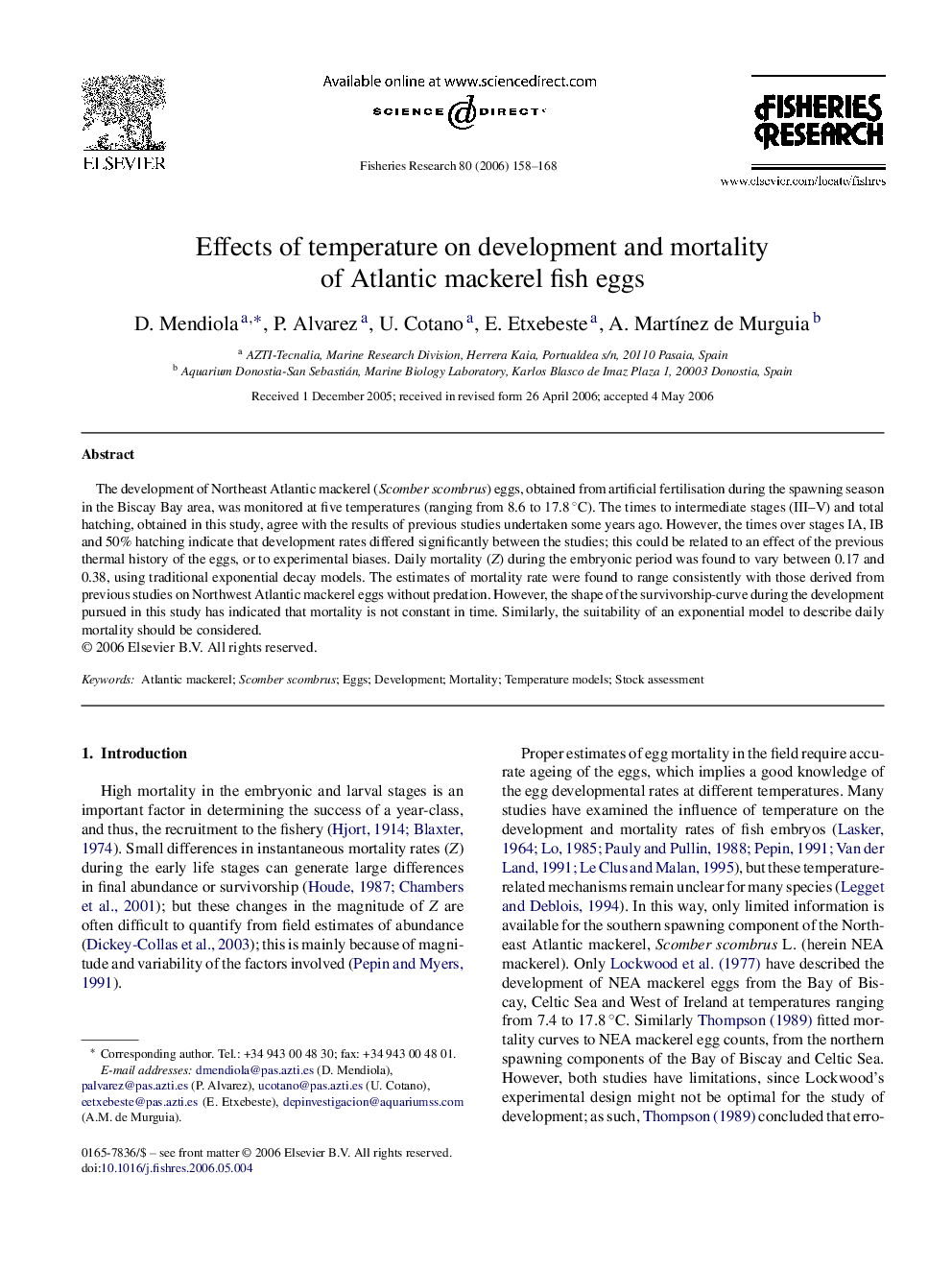| Article ID | Journal | Published Year | Pages | File Type |
|---|---|---|---|---|
| 4544717 | Fisheries Research | 2006 | 11 Pages |
The development of Northeast Atlantic mackerel (Scomber scombrus) eggs, obtained from artificial fertilisation during the spawning season in the Biscay Bay area, was monitored at five temperatures (ranging from 8.6 to 17.8 °C). The times to intermediate stages (III–V) and total hatching, obtained in this study, agree with the results of previous studies undertaken some years ago. However, the times over stages IA, IB and 50% hatching indicate that development rates differed significantly between the studies; this could be related to an effect of the previous thermal history of the eggs, or to experimental biases. Daily mortality (Z) during the embryonic period was found to vary between 0.17 and 0.38, using traditional exponential decay models. The estimates of mortality rate were found to range consistently with those derived from previous studies on Northwest Atlantic mackerel eggs without predation. However, the shape of the survivorship-curve during the development pursued in this study has indicated that mortality is not constant in time. Similarly, the suitability of an exponential model to describe daily mortality should be considered.
